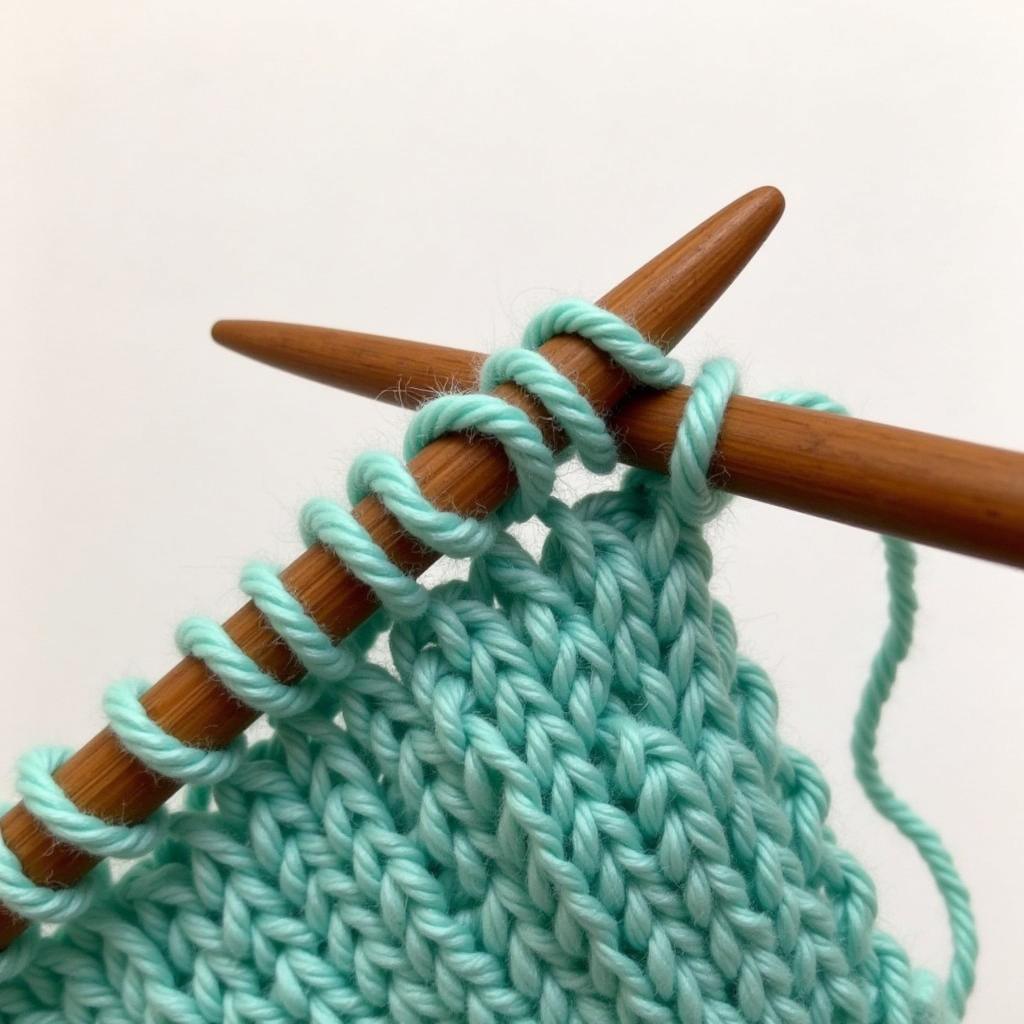Knitting with two colors opens up a world of exciting patterns and designs, but managing those yarns can feel like a juggling act. Mastering how to carry yarn when knitting with two colors is crucial for creating neat, even stitches and avoiding tangled messes. This comprehensive guide will equip you with various techniques and tips to confidently handle multiple yarns, ensuring your projects are both beautiful and enjoyable to create. Learn how to choose the right method for your project and elevate your knitting skills to the next level.
Want to explore more colorful knitting techniques? Check out how to knit multiple colors.
Different Methods for Carrying Yarn
Several techniques exist for carrying yarn when working with two colors in knitting. Choosing the right one depends on the project and personal preference. Let’s explore the most common methods.
English Method vs. Continental Method
Whether you knit English style (throwing the yarn) or Continental style (picking the yarn), impacts how you carry the unused yarn. Neither is inherently better, but understanding the nuances of each can influence your yarn management.
English Method (Throwing)
With the English method, the unused yarn typically rests over the index finger of your non-dominant hand, ready to be picked up when needed. This can sometimes lead to a slightly looser carry, so tension control is key.
Continental Method (Picking)
Continental knitters often find it easier to manage the unused yarn by draping it over their non-dominant index finger or holding it alongside the working yarn. This allows for a tighter carry and can be more efficient for intricate colorwork.
Carrying Yarn on the Wrong Side (WS)
Carrying yarn along the wrong side (WS) is ideal for small color changes, like stripes or small motifs. Simply hold the unused yarn along the WS of the work and knit over it with the working yarn. This creates small floats on the back of your fabric.
 Carrying Yarn on Wrong Side – A Close-up
Carrying Yarn on Wrong Side – A Close-up
Carrying Yarn on the Right Side (RS)
This technique is similar to carrying on the WS, but the unused yarn is held on the RS, creating floats on the front of the fabric. This is useful for larger color changes or when the pattern requires the unused color to be readily available for the next row.
Twisting Yarns
Twisting the yarns helps prevent long floats and keeps the unused yarn secure. This involves wrapping the working yarn around the unused yarn every few stitches, effectively trapping it. This technique is especially helpful for larger color changes or when using slippery yarns.
Tips for Managing Two Colors
- Yarn Balls: Use separate yarn balls or cakes for each color to prevent tangling.
- Yarn Tension: Consistent tension is essential for even stitches. Practice carrying the yarn loosely enough to avoid puckering but tightly enough to prevent sagging.
- Catching Floats: For larger color changes, consider catching the floats every few stitches to secure them and prevent snagging. You can find more information about changing colors in our guide on how to switch yarn colors.
- Practice: The best way to master carrying yarn is to practice! Start with simple patterns and gradually increase complexity as you gain confidence.
Choosing the Right Method
What’s the best way to choose which method suits your project? Consider these factors:
- Frequency of Color Changes: For frequent changes, carrying on the WS or twisting might be best.
- Size of Color Blocks: Larger blocks might benefit from carrying on the RS. Learning how to knit with multiple colors will further expand your options.
- Yarn Type: Slippery yarns often require twisting to prevent long floats.
- Personal Preference: Experiment with different methods to find what feels most comfortable.
Expert Insight from Amelia Reed, Master Knitter: “The key to successful two-color knitting lies in finding the yarn carrying method that best suits your individual knitting style and the specific demands of your project. Don’t be afraid to experiment and find what works best for you.”
Conclusion
Mastering how to carry yarn when knitting with two colors opens up a world of creative possibilities. By understanding the various techniques and practicing regularly, you’ll be able to confidently tackle intricate colorwork and create beautiful knitted pieces. So grab your needles and yarn, and start exploring the vibrant world of two-color knitting! You might also find our guide on how to add a new color when knitting helpful.
FAQ
- What is the easiest way to carry yarn when knitting with two colors? Carrying the yarn on the wrong side (WS) is often the simplest method for beginners.
- How do I prevent long floats when carrying yarn? Twisting the yarns or catching the floats can help prevent snags and keep the fabric neat.
- Which method is best for large color blocks? Carrying the yarn on the right side (RS) is often preferred for larger blocks of color.
- Does it matter if I knit English or Continental style? While both methods can be used, your chosen style might influence your preferred yarn carrying technique.
- How do I choose the right yarn carrying method? Consider the frequency of color changes, size of color blocks, yarn type, and personal preference.
- What if my tension is uneven when carrying two colors? Practice is key. Focus on maintaining consistent tension with both yarns.
- Where can I find more information about changing colors in crochet? You can find a helpful guide on how to switch colors when crocheting.
Common Scenarios
- Scenario 1: Knitting Stripes: For simple stripes, carrying the yarn on the WS is usually sufficient.
- Scenario 2: Intricate Colorwork: For complex patterns, consider twisting the yarns or catching floats to manage the multiple colors effectively.
- Scenario 3: Knitting with Slippery Yarns: Twisting the yarns is highly recommended for slippery yarns to prevent long, loose floats.
Further Exploration
For more information on colorwork techniques, explore our articles on various knitting and crocheting topics.
Need Help? Contact us at Phone Number: 0373298888, Email: [email protected] Or visit us at: 86 Cầu Giấy, Hà Nội. We have a 24/7 customer service team.

